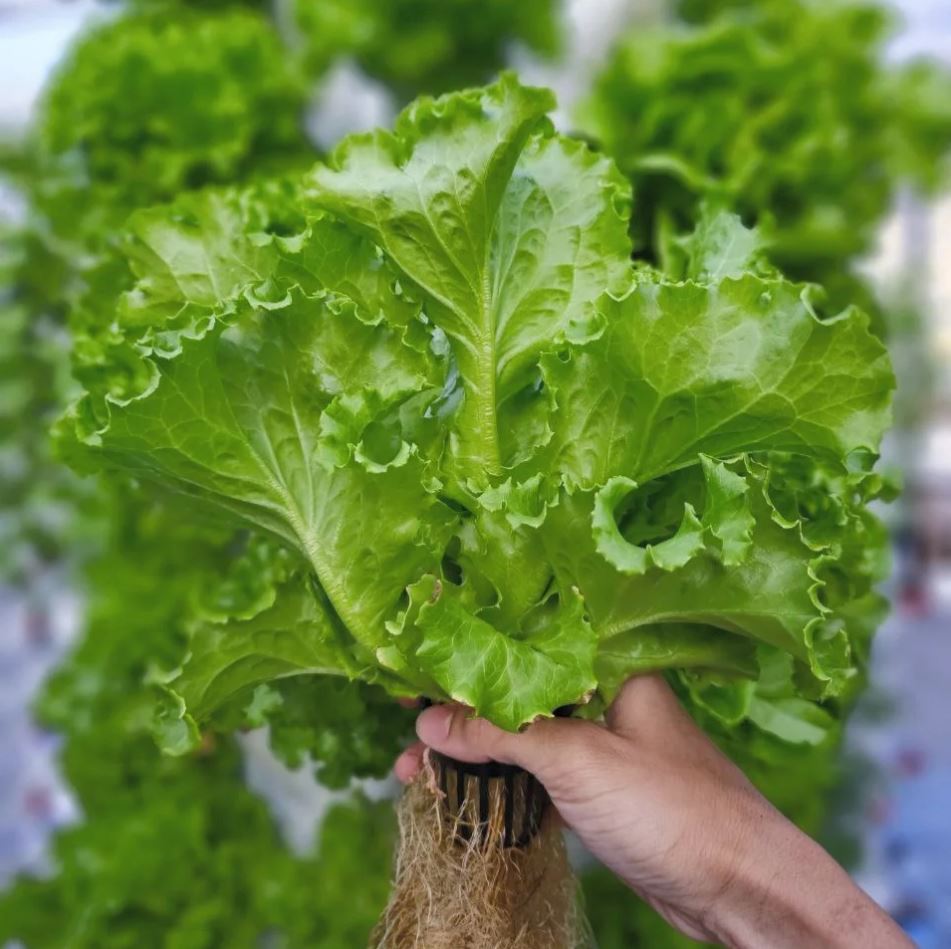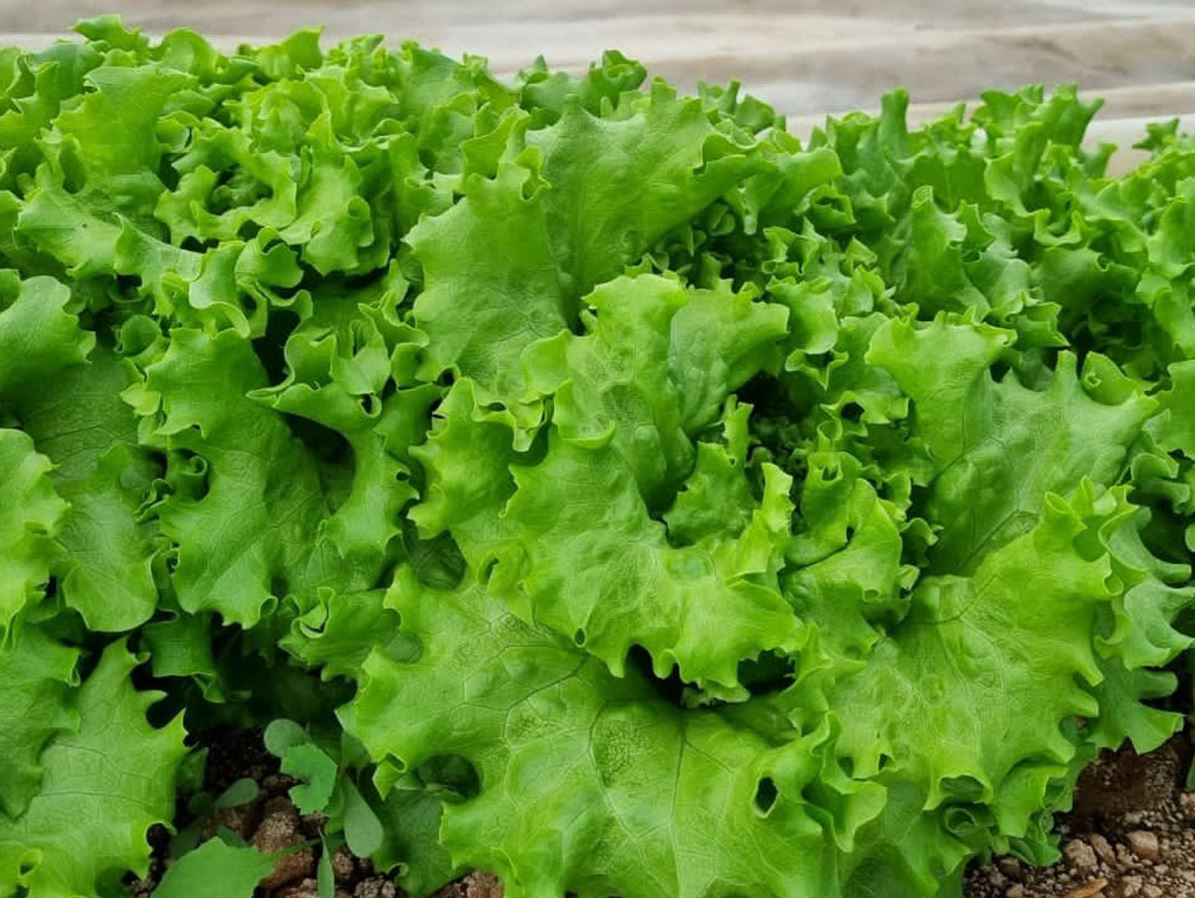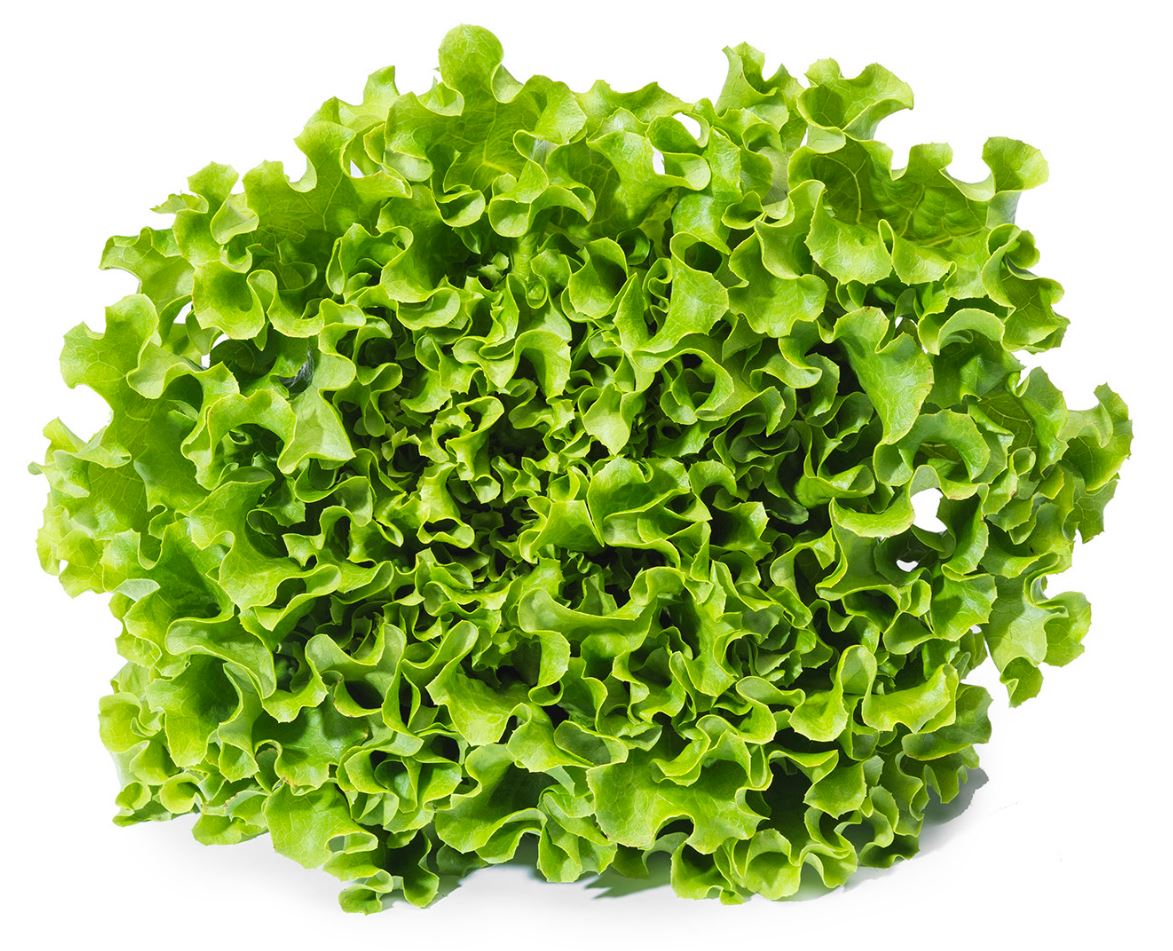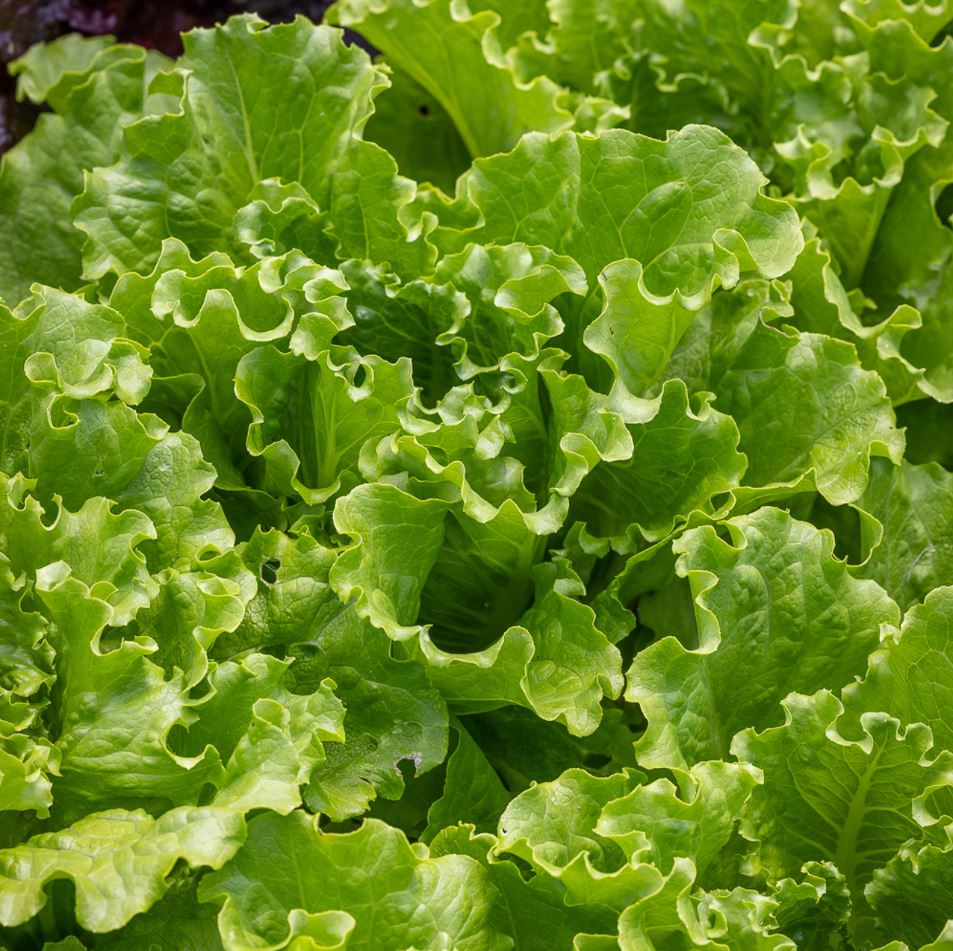Exploring the Versatility and Varieties of Batavia Lettuce
Batavia lettuce, also known as French crisp, is a versatile and increasingly popular type of lettuce that delights gardeners and salad lovers alike. This lettuce variety is characterized by its robustness and adaptability, thriving well in a range of climatic conditions, which makes it a favored choice in gardens around the world. One of its most notable features is its classification—Batavia lettuce can be categorized as either a loose-leaf lettuce or a semi-heading lettuce. This dual categorization highlights its unique structure; the leaves branch from a single stalk, offering a loose arrangement that does not form a tight head like iceberg lettuce or a fully open form like most leaf lettuces.
The semi-heading varieties of Batavia lettuce tend to form more of a rosette shape, which is somewhat looser than traditional heads of lettuce but provides ample protection for the inner leaves, keeping them tender and crisp. This type of growth makes Batavia lettuce not only beautiful in a garden but also practical for continuous harvest. The outer leaves can be picked without harming the plant, allowing it to continue growing and producing fresh foliage over time.
Moreover, Batavia lettuce is celebrated for its crisp, sweet leaves which are reminiscent of romaine lettuce, but with a slightly more buttery texture. It comes in a variety of colors, from vibrant greens to deep reds, adding a splash of color to any dish. This diverse palette combined with its delicious taste and crisp texture makes Batavia lettuce a staple in salads and a host of other culinary creations, highlighting its significant role in both home kitchens and gourmet restaurants.
| Feature | Description |
|---|---|
| Variety Name | Batavia Lettuce, also known as French Crisp |
| Characteristics | Robust and adaptable, thrives in various climatic conditions |
| Classification | Can be categorized as loose-leaf or semi-heading lettuce |
| Structure | Leaves branch from a single stalk, forming a loose arrangement without a tight head |
| Semi-heading Variety | Forms a rosette shape, looser than traditional heads, protects inner leaves |
| Harvesting | Outer leaves can be picked without harming the plant, allowing continuous growth |
| Taste and Texture | Crisp, sweet leaves similar to romaine but more buttery |
| Color Varieties | Comes in vibrant greens to deep reds |
| Culinary Uses | Staple in salads and various dishes, used in home kitchens and gourmet restaurants |
Contents
Characteristics of Batavia Lettuce
One of the most valued characteristics of Batavia lettuce is its remarkable ability to resist bolting in hot weather. Bolting, a process where a plant starts to produce a flowering stalk before harvest, is a common challenge in growing leafy vegetables as it often leads to a bitter taste and reduced quality. However, Batavia lettuce’s resilience to high temperatures makes it an ideal choice for growers in warmer climates. This attribute not only ensures a prolonged harvest period but also maintains the quality and flavor of the leaves, which can be compromised in other varieties under similar conditions.

The leaves of Batavia lettuce are notable for their crisp texture, which is reminiscent of Romaine lettuce, a favorite among crisp lettuce lovers. The robust leaves of Batavia lettuce are thick and crunchy yet maintain a pleasant juiciness, making them a preferred ingredient for fresh salads and sandwiches. This crispness is particularly remarkable as it is retained even through varying degrees of hot growing conditions, where other varieties might wilt or degrade. The structural integrity of Batavia lettuce leaves after prolonged exposure to heat is a testament to its suitability for a wide range of climates, adding to its versatility as a garden vegetable.
Furthermore, Batavia lettuce leaves are not only durable in the field but also have an excellent shelf life after harvesting. This resilience post-harvest is highly appreciated by both commercial producers and home gardeners as it allows for longer storage periods without significant loss of texture or flavor, making Batavia lettuce a practical choice for continuous use.
| Feature | Description |
|---|---|
| Resistance to Bolting | Remarkable ability to resist bolting in hot weather, maintaining quality and flavor. |
| Texture | Crisp texture similar to Romaine lettuce, thick and crunchy yet juicy. |
| Performance in Heat | Retains crispness and structural integrity even in hot growing conditions, making it suitable for a wide range of climates. |
| Shelf Life | Excellent post-harvest resilience allows for prolonged storage without significant loss of texture or flavor. |
Popularity in France
In France, Batavia lettuce enjoys a special status among salad greens, cherished for its taste and the longevity it maintains after harvest. Its flavor, which strikes a perfect balance between sweetness and a subtle, earthy bitterness, complements a wide array of French and international dishes. This makes Batavia lettuce a versatile base for the iconic Salade Niçoise and other traditional salads. The French culinary preference for fresh, high-quality ingredients that maintain their integrity from farm to table is a perfect match for the characteristics of Batavia lettuce.
The extended shelf life of Batavia lettuce also plays a crucial role in its popularity in France. French markets and chefs value ingredients that can withstand the logistical demands of gourmet food preparation and busy market schedules without compromising on quality. Batavia lettuce meets these demands beautifully, as it remains vibrant and crisp longer than many other lettuce varieties. This durability ensures that it can be enjoyed in optimal condition days after harvesting, which is essential in the fast-paced environment of French gastronomy.

Moreover, the aesthetic appeal of Batavia lettuce, with its rich green and sometimes reddish hues, aligns well with the French appreciation for visually appealing meals. The ability to add both color and texture to a dish makes Batavia lettuce a favorite among chefs who are keen on presenting dishes that are as beautiful as they are delicious. This alignment of quality, durability, and beauty has solidified Batavia lettuce’s place in French culinary tradition, making it a staple in both home kitchens and high-end restaurants across the country.
In conclusion, Batavia lettuce stands out in the lettuce family for its robustness in growth and longevity in storage, traits that have endeared it to growers and cooks in hot climates and in culinary-centric countries like France. Its crisp texture and ability to stay fresh longer than many competitors make it a preferred choice for anyone looking for a reliable, tasty, and versatile lettuce option.
| Aspect | Description |
|---|---|
| Culinary Status | Cherished for its balanced flavor and longevity, Batavia lettuce is a staple in traditional French salads like Salade Niçoise. |
| Flavor Profile | Offers a perfect balance between sweetness and a subtle earthy bitterness, complementing a wide array of dishes. |
| Shelf Life | Extended shelf life meets the logistical demands of gourmet food preparation and busy market schedules in France. |
| Durability | Remains vibrant and crisp longer than many other lettuce varieties, ensuring quality is maintained from farm to table. |
| Aesthetic Appeal | Rich green and sometimes reddish hues align with the French appreciation for visually appealing meals. |
| Culinary Integration | Its robustness in growth and longevity in storage make it a preferred choice in French gastronomy, used in both home kitchens and high-end restaurants. |
Cultivation Details Via Video
Cultivating Batavia lettuce generally requires about 50 days from seed to maturity, although this can vary slightly depending on the variety and growing conditions. To achieve the best results, seeds should be planted in well-draining soil enriched with organic matter. Batavia lettuce prefers a sunny location but appreciates some shade in hotter climates to prevent overexposure.
Watering should be consistent to maintain moist, but not waterlogged, soil. Overhead watering is often recommended to avoid too much moisture on the leaves, which can lead to disease. Adding a layer of mulch can help retain soil moisture and keep the roots cool.
Nutrient-wise, a balanced fertilizer can be applied at planting and lightly every four weeks to support healthy growth. Regular checks for pests and diseases will help ensure that plants remain healthy and productive throughout the growing season.
By understanding the specific needs and characteristics of each variety, gardeners can enjoy a successful and rewarding Batavia lettuce cultivation, bringing a range of flavors and colors to their culinary creations.
| Aspect | Description |
|---|---|
| Growth Timeline | Approximately 50 days from seed to maturity, with slight variations depending on variety and conditions. |
| Soil Requirements | Well-draining soil enriched with organic matter. |
| Location | Prefers sunny locations but requires some shade in hotter climates to prevent overexposure. |
| Watering | Consistent to maintain moist soil; overhead watering recommended to avoid excessive moisture on leaves. |
| Mulching | Adding a layer of mulch helps retain soil moisture and keeps roots cool. |
| Fertilization | Use a balanced fertilizer at planting and lightly every four weeks to promote healthy growth. |
| Pest and Disease Management | Regular checks are crucial to keep plants healthy and productive. |
Cooking Tips
Batavia lettuce, with its crisp and robust leaves, is a delightful addition to any kitchen repertoire, offering a texture that is ideal for a variety of dressings, especially those that are oil-based. The leaf structure of Batavia lettuce is particularly suited to pairing with oily dressings for several reasons. First, the leaves are thicker and more resilient than those of more delicate lettuce types, such as butter lettuce. This means they can hold up well under the weight and texture of heavier, oil-based dressings without wilting or becoming soggy. The slightly curled edges of Batavia lettuce leaves provide an excellent surface for dressings to cling to, ensuring each bite is flavorful.
Oily dressings, which typically include ingredients like olive oil, avocado oil, or sesame oil, are enhanced by the crisp texture of Batavia lettuce. The oil adheres to the leaves more effectively than it does with slicker, smoother lettuces. This characteristic makes Batavia lettuce an excellent base for robust and hearty salads that require a dressing that can match the texture and weight of the lettuce without overpowering it. Whether you’re dressing a simple green salad with a vinaigrette or tossing the leaves with a more complex, creamy dressing, Batavia lettuce holds its own, maintaining its texture and crispness.
Moreover, the neutral flavor of Batavia lettuce makes it a versatile canvas for the rich flavors often found in oily dressings. The lettuce enhances these flavors without competing with them, allowing the dressing to be the star of the dish while the lettuce provides a satisfying crunch and freshness.
| Feature | Description |
|---|---|
| Leaf Structure | Thick, resilient leaves with slightly curled edges, ideal for holding heavier, oil-based dressings without wilting. |
| Compatibility with Oily Dressings | The texture of the leaves allows oil to adhere effectively, making it suitable for robust, hearty salads. |
| Culinary Role | Provides a crisp texture and neutral flavor, enhancing the rich flavors of oily dressings without competing with them. |
| Overall Suitability | Excellent for a variety of salads, especially those requiring durable greens that maintain texture and crispness under oil-based dressings. |
Measurement Equivalents in Cooking
Understanding measurement equivalents in cooking is essential for accurate recipe execution, especially when dealing with ingredients like lettuce, where volume can be deceiving due to its bulky yet lightweight nature. Here are some practical measurement equivalents for Batavia lettuce that will help in kitchen preparations:
1 pound of Batavia lettuce typically equates to approximately 6 cups of torn leaves. This measurement is helpful when preparing salads for multiple people or for calculating portions for meal planning.

When dealing with shredded Batavia lettuce, the measurements translate as follows:
8 ounces of shredded lettuce is about 225 grams, yielding roughly 3 cups.
2 ounces of shredded lettuce converts to around 50 grams, which will give you 1 cup.
8 ounces of shredded lettuce increases to 200 grams, providing about 4 cups.
These equivalents are particularly useful for recipes that require precise proportions of ingredients to maintain flavor balance and texture. For example, when making a taco salad or a sandwich where lettuce is used both as a filler and a flavor enhancer, knowing these equivalents can ensure that the final dish achieves the desired taste and presentation.
When preparing lettuce, whether torn or shredded, it’s essential to handle it gently to prevent bruising the leaves. Use a sharp knife for cutting or tear the leaves by hand. After cutting, washing the lettuce in cold water can revitalize the leaves and enhance their crispness before use. It is also advisable to dry the lettuce thoroughly, preferably with a salad spinner, to ensure that any dressing used adheres well and does not become diluted.
In summary, the versatility and robust texture of Batavia lettuce make it a staple for culinary uses, particularly when using oily dressings. Its ability to hold dressings well without losing texture or flavor makes it ideal for a variety of dishes, from simple salads to more elaborate presentations. Understanding how to measure it accurately ensures that every dish in which Batavia lettuce is featured turns out perfectly balanced and delicious.
| Measurement | Equivalent | Notes |
|---|---|---|
| 1 pound of Batavia lettuce | Approximately 6 cups of torn leaves | Useful for salads and meal planning. |
| 8 ounces of shredded lettuce | 225 grams, about 3 cups | Suitable for recipes requiring precise proportions like taco salads. |
| 2 ounces of shredded lettuce | 50 grams, about 1 cup | Good for smaller dishes or single servings. |
| Handling and Preparation | Cut or tear gently, wash in cold water, dry thoroughly | Ensures crispness and effective dressing adherence. |
| Culinary Role | Robust texture, holds dressings well | Ideal for a variety of dishes, from salads to sandwiches. |
Historical Notes
The historical roots of Batavia lettuce, particularly the varieties such as Pierre Bénite and Reine des Glaces, are deeply entrenched in the annals of horticultural history. These varieties were first documented in 1885 by Vilmorin-Andrieux in the seminal horticultural book “Les Plantes Potagères,” which has been a crucial reference for vegetable growers and botanists since its publication. This documentation highlights not only the age and tradition of cultivating Batavia lettuce but also its longstanding significance in the gardening world.
Pierre Bénite and Reine des Glaces have been cherished over the decades for their unique characteristics. Pierre Bénite, known for its dense, crisp leaves and robust flavor, has been a favorite in both home gardens and commercial farms. Reine des Glaces, with its distinctive frilly edges and excellent crisp texture, stands out as a gourmet variety that maintains its texture and flavor even under varying climatic conditions. The acknowledgment of these varieties in such a prestigious publication underscores their importance and their enduring popularity among gardeners and chefs alike.

The documentation of these varieties in the 19th century by Vilmorin-Andrieux also illustrates the evolution of plant breeding and vegetable cultivation over the years. It shows a history of selective breeding aimed at enhancing specific desirable traits such as flavor, texture, and resistance to environmental stresses. This historical perspective provides a deeper appreciation of the work that has gone into developing the varieties of Batavia lettuce we enjoy today.
| Variety | Description | Historical Context |
|---|---|---|
| Pierre Bénite | Dense, crisp leaves with robust flavor. | Documented in 1885 by Vilmorin-Andrieux in “Les Plantes Potagères.” Popular in both home gardens and commercial farms. |
| Reine des Glaces | Frilly edges with excellent crisp texture. | Noted in the same 1885 publication for its gourmet quality and adaptability to various climates. |
| Impact on Horticulture | Longstanding significance in gardening. | Illustrates the evolution of plant breeding, focusing on enhancing flavor, texture, and environmental resistance. |
Batavia lettuce is truly a marvel of the vegetable world, combining aesthetic appeal with culinary versatility and robustness that make it suitable for a variety of growing conditions and culinary uses. Its crisp leaves, which can range from deep green to vibrant red, not only add a splash of color to any dish but also provide a satisfying crunch and a neutral platform for a myriad of flavors. The lettuce’s ability to resist bolting in hot weather, along with its notable shelf life post-harvest, further elevates its status among both home gardeners and professional chefs.
The historical significance of varieties like Pierre Bénite and Reine des Glaces, documented as far back as 1885, adds a layer of historical richness and tradition to Batavia lettuce. Knowing that these varieties have been cultivated and enjoyed for more than a century makes growing and eating them an experience rooted in historical continuity and botanical heritage.
I encourage culinary enthusiasts and gardeners alike to explore the different varieties of Batavia lettuce in their cooking and gardening endeavors. Each variety offers something unique, from the delicate, buttery leaves of Blonde de Paris to the rustic, peppery undertones of Gloire du Dauphiné. Experimenting with these can transform simple dishes into exquisite culinary creations and bring a taste of history and tradition to the dining table.
In embracing the diversity of Batavia lettuce, you not only enhance your culinary palette but also participate in a living history of gardening that celebrates both the past and the innovative future of horticulture. Whether you are dressing a salad with a rich, oily vinaigrette or looking for a sturdy, flavorful green for your next culinary experiment, Batavia lettuce offers a versatile and robust choice that is sure to delight.
